Last updated: June 3, 2024
Article
2022 Excellence in Education Awards
The National Park Service is pleased to congratulate the national and regional recipients of the 2022 Excellence in Education Awards. The Excellence in Education Awards recognize outstanding contributions to the profession of education that model excellence through thoughtful engagement of education principles, innovation, and adaptation.
National Recipient
Earth, Sea, Sky Continuum of Learning
Jody Anastasio, Erin Deskin, Glen Beavers, Kealani Haney
Region 8, 9, 10, 12 (Pacific West) | Hawaiʻi Volcanoes National Park
- Duration:
- 1 minute, 48 seconds
Education staff and partners at Hawai'i Volcanoes National Park accept the 2022 National Excellence in Education Award.
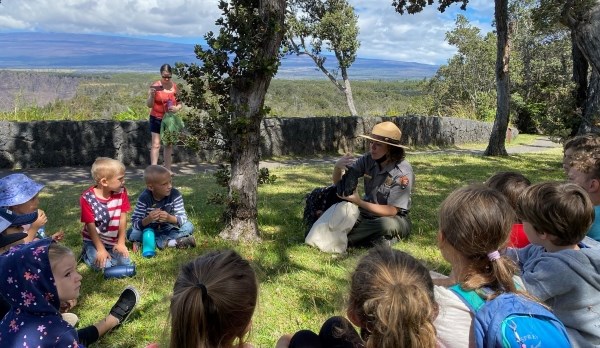
The Earth, Sea, Sky Continuum of Learning is a collaborative program between Hawaiʻi Volcanoes National Park (Earth), Mokupāpapa Discovery Center (Sea), and ʻImiloa Astronomy Center (Sky), which are all based on the east side of Hawaiʻi island. The concept was initiated by the park and co-created by the three partners. It relates to the Kumulipo, the Hawaiian creation chant, which connects the stars and space with living organisms on Earth.
Students who participate in the Earth, Sea, Sky program visit three field sites and explore the connectedness of the volcanic island on which they live. The programming utilizes Next Generation Science Standards as well as Hawaiʻi-specific Nā Hopena A‘o (“HĀ”) standards, which reflect the unique cultural values of Hawaiʻi. It is supported by follow-up activities in the classroom.
The program provides opportunities for students to get out of the indoor classroom environment and experience enriching place-based activities; exposes students to a variety of conservation careers; models ways of learning that consistently connect scientific research with Hawaiian culture; and fills the gap between elementary school field trips and the high school Youth Ranger program.
Partners: Anya Tagawa and Christine Ghiasi, ʻImiloa Astronomy Center of Hawaiʻi (part of the University of Hawaiʻi Hilo); Justin Umholtz and Hoku Pihana, Mokupāpapa Discovery Center (part of Papahānaumokuākea Marine National Monument/NOAA)
Regional Recipients
Climate Change and Pollinators
Kathy Langley, Trisha Kurtz, Marcia Akresh, Jody Shampton-Moore, Alyssa Chiascione
Region 1 (National Capital Area) | The White House and President's Park
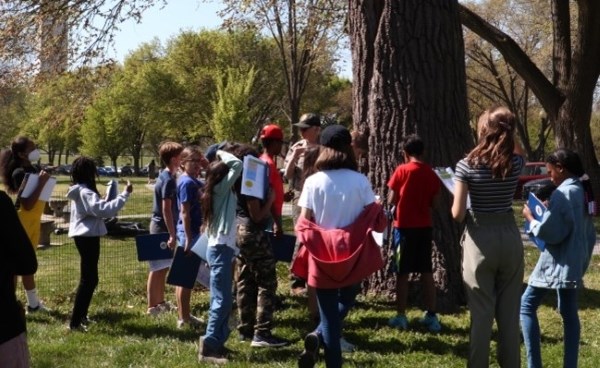
The Climate Change and Pollinators education program at the White House and President’s Park provides curriculum-based education programming for local students in 4th through 6th grade. The program includes two science-based curriculum lessons created by a teacher through the Teacher Ranger Teacher program. National Park Service staff held two teacher workshops to receive feedback on and inform adjustments to the lessons. The teachers that attended the workshop later participated in the program with their students.
The Climate Change and Pollinators program includes complementary content of two videos and a site lesson that were later produced by Urban Ecology Research Learning Alliance (UERLA) college interns through UERLA agreements with American University and the University of Maryland College Park. The education program includes pre-visit and in-park programming. The pre-visit ranger program helps students learn about conservation, preservation, climate change, pollinators, and White House history. The in-park visit applied these lessons through an experiment and field exercise that helps students discover how trees help to fight climate change and provide a healthier urban environment.
Partners: Isabella Silva, UERLA Science Engagement Intern, American University student.
Hard History Project at Salem Maritime
Nora Halloran, Maryann Zujewski
Region 1 (Northeast Region) | Salem Maritime National Historic Site

The Hard History Project at Salem Maritime National Historic Site seeks to bring stories of slavery to light by empowering educators to teach this history with local examples, place-based experiences, and primary sources. This education program practices a shared-authority approach to co-create education programs and materials with teachers rather than for teachers. These include the Slavery & Freedom in Salem education programs, professional development programs, pre-visit classroom programs and lessons, and other learning materials.
Park rangers partnered with teachers, scholars, and museum education experts to produce two short films: Exploring Hard History and Understanding and Teaching Hard History. The films feature teacher and student voices encouraging these audiences to see themselves reflected in and as architects of National Park Service education. Hard History helps Salem Maritime tell more inclusive stories with an audience-centered approach, treating history as an "ongoing discovery process" where new generations incorporate new perspectives and build their own relevancy. In classroom and park programs, students identify the through-lines in history to the present day and examine historical content through an equity and social justice lens. The project engages students with historical narratives of Black agency and stories that move beyond trauma to examine empowerment. Examples include narratives of enslaved peoples’ civic engagement, community life, cultural practices, and resistance.
Partners: Casey Silot, Thurgood Marshall Middle School, Lynn Public Schools; Jarah Botello, The Hard History Project; and Bethany Jay, Salem State University.
Integrating the African American Experience Program and Lesser Told Stories into Student Programming
Nicole Nadasen, Sydney Rainone, Jessie Snow Neeley, Antoine Fletcher, Atalaya Dorfield, Katie Corrigan
Region 1, 2, 4 (Southeast) | Great Smoky Mountains National Park
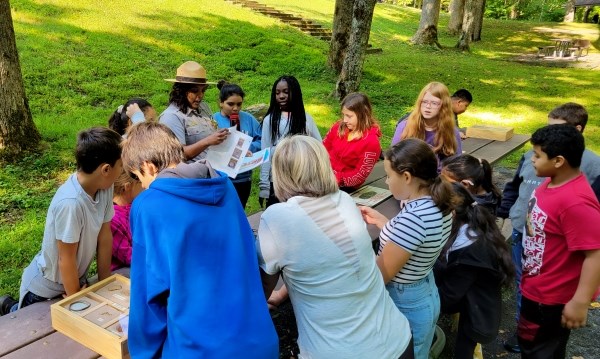
The education team at Great Smoky Mountains National Park spearheaded the African American Experience Project to provide local students stories that reflect the innovation and diversity of the region, while making the content more relevant to them. In partnership with other park staff and the local community, the education team created new and updated existing education programming. The education programs invite students to address challenging topics such as segregation while also learning about the achievements of many different peoples in the region.
The programming is informed by research in which park staff uncovered untold stories including one tale of a mountain doctor who treated the wealthy and poor in the early to mid-1900s when many had no access to medical care. Dr. Branch, a Black man in Cocke County, TN impacted the lives of thousands in the community at a time when he still faced the harsh reality of legal segregation. The story of Dr. Branch became one of the main focal points of an 8th grade cultural history program, where students learn about community leaders of the area including Sequoyah and his development of the Cherokee syllabary.
Partners: Cocke County Museum and staff and Sequoyah Birthplace Museum and staff.
Write the River: A Creative Writing Float and Art Experience
Susan Cook, Susan Cook, Bobbie Roshone, Travis Connot
Region 3, 4, 5 (Midwest) | Niobrara National Scenic River
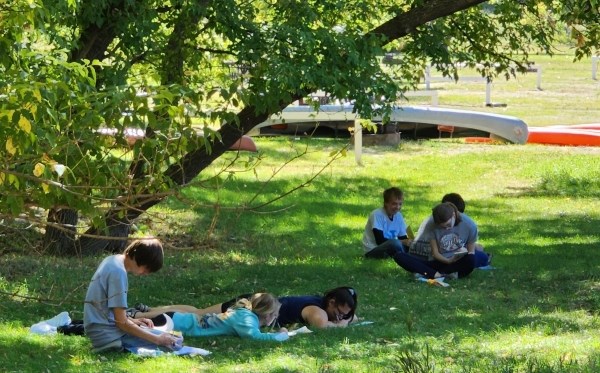
Write the River: Creative Writing Float and Art Experience combines canoeing the Niobrara National Scenic River and writing or plein air painting to teach students about the park. Park staff co-created the program with English professionals from the Nebraska Writing Project and art educators from Valentine High School. Team members prepare the education programs together to ensure they are meeting education standards, the needs of the school, and park education goals. In the writing program, students learn about one of four creative writing styles and a park resource at a stop along the river. Students then share their writing at the last stop. For the plein air art program, students learn a painting technique at each stop and create a painting at the final stop. The student writing and art products are displayed in the park visitor center for family, friends, and visitors to enjoy.
Partners: Dr. Robert Brooke, Chair of the Nebraska Writing Project and Chair of University of Nebraska English Department; Jan Knispel, Nebraska Writing Project; Ronelle Kilmer, Valentine High School Nebraska Writing Project; Janell Stoeger, Valentine High School Nebraska Writing Project; Brenda Larabee, Stuart High School Nebraska Writing Project; Joan Swim, Valentine High School Art Teacher; and Samantha Hand, Valentine High School Nebraska Writing Project.
Mission: Resilience―Strengthening Students’ Resiliency through the Power of Place
Sara Sutton, Precious Vicente, Andrea Pike, Pam Tripp, Dave Carney
Region 6, 7, 8 (Intermountain) | Casa Grande Ruins National Monument
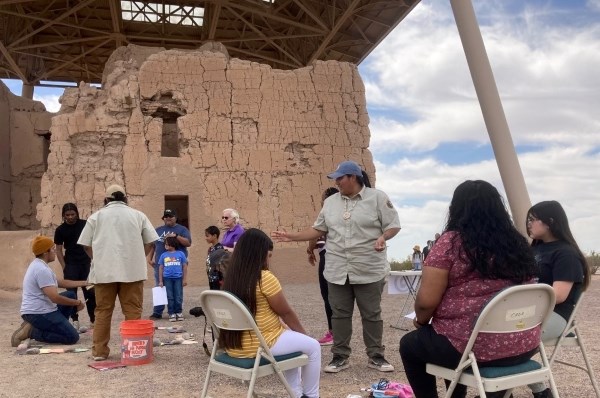
Through a combination of live virtual and in-person programming, Mission: Resilience strengthens students’ resiliency while leveraging the power of place at Casa Grande Ruins National Monument. This education programming focuses on the resiliency of the Sonoran Desert Ecosystem, the Ancestral Sonoran Desert People who called the desert home, and the continued connection of six Native American tribes who have direct ancestral ties to present-day Casa Grande Ruins.
Completing Mission: Resilience helps students identify their strengths and gives them tools to thrive in the face of challenges, and foster social and emotional well-being. The program also helps them identify Casa Grande Ruins as a place of healing for them and their families. The education program is targeted to 3rd and 4th grade students at local, Title 1 schools and includes mindfulness, breathing techniques, and mindful movement. The program also includes a family day for the local community.
Chosen Frozen: Wrangell-St. Elias Middle School Shared Stewardship Winter Day Camps
Russ Scribner, Diane Ellsworth
Region 11 (Alaska) | Wrangell-St. Elias National Park and Preserve
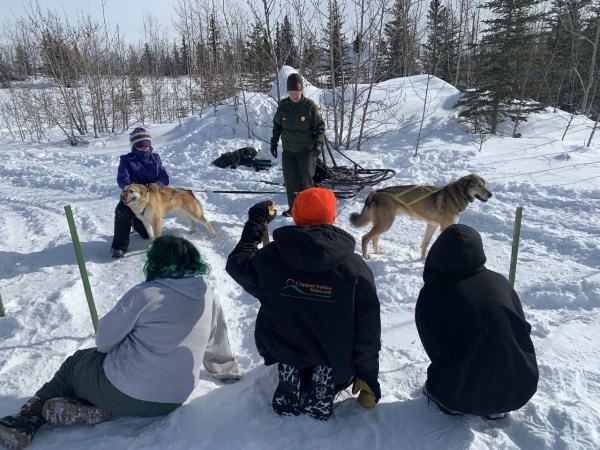
The Chosen Frozen winter day camp at Wrangell-St. Elias National Park and Preserve integrates knowledge and skill development of local Alaskan subsistence activities, winter recreation and safety, natural and cultural resource education, and local school district science curricula. Park staff co-create curriculum and activities with teachers, native communities, federal and state agencies, and nonprofit partners. Subject matter experts from the community teach at the camp, which offers activities that include dog mushing, ice fishing, snowshoeing, skiing, and Quinzhee snow shelter construction. Camp activities address Leave No Trace, winter survival skills, snowmobile safety and repair, avalanche safety, and snow and ice science.
This program leverages park and partner resources to engage local youth in the shared stewardship mission of the nation’s largest National Park Service unit. At 13.2 million acres, Wrangell-St. Elias is larger than Switzerland and serves 23 communities with ties to the park, including 14 Alaska Native villages.
Partners: Wrangell Institute for Science and the Environment (WISE), Glennallen Office of the Bureau of Land Management, Alaska Division of Forestry, Copper River Native Association, and Copper River School District.
Tags
- casa grande ruins national monument
- great smoky mountains national park
- hawaiʻi volcanoes national park
- niobrara national scenic river
- salem maritime national historical park
- the white house and president's park
- wrangell - st elias national park & preserve
- excellence in education awards
- nps awards
- education
